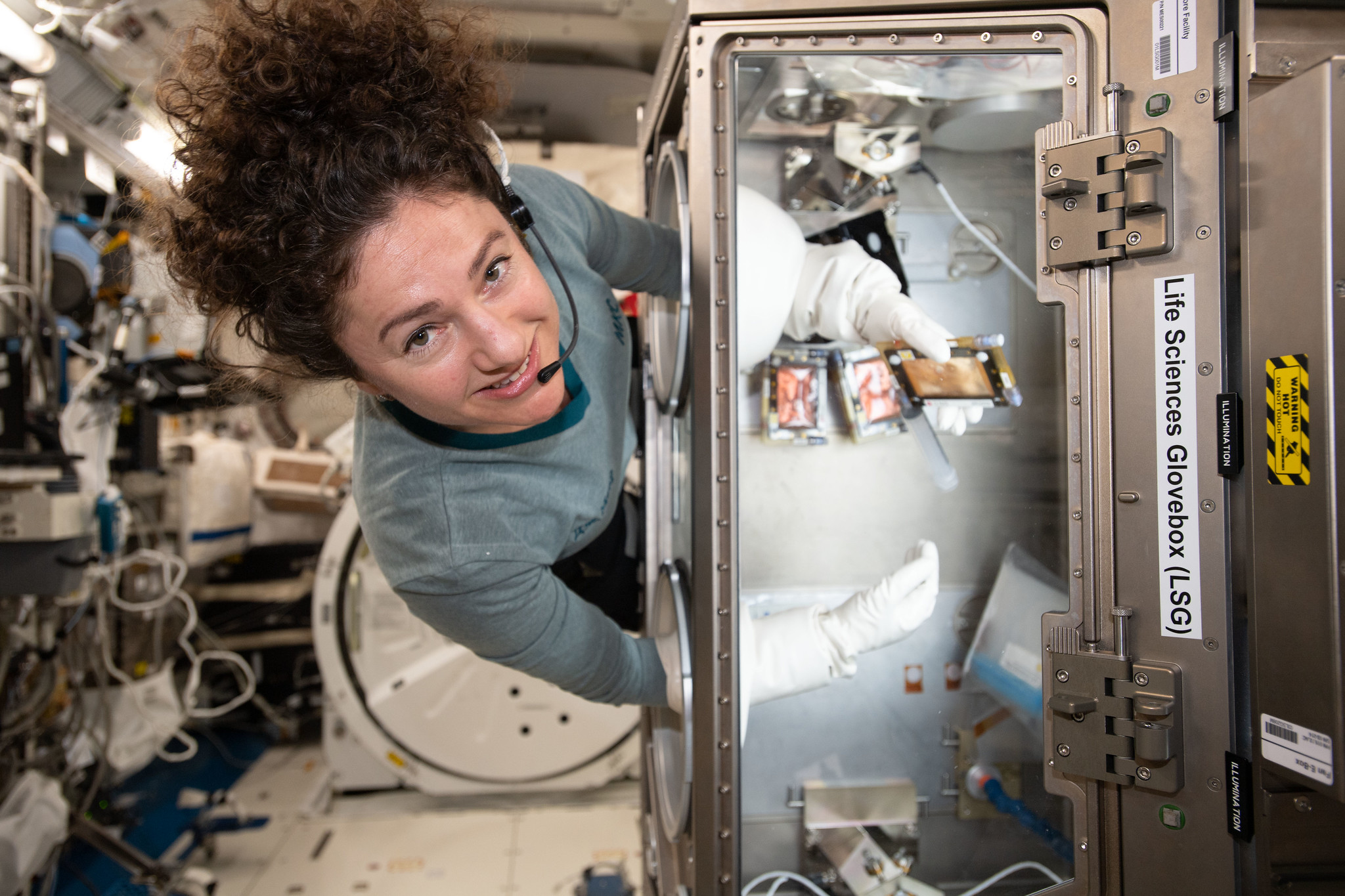Space flames and microgravity liquids: Astronauts mark 20 years with space station equipment
The Microgravity Science Glovebox celebrates its space anniversary this month.

In space, no one wants to deal with the cleanup from liquids, flames or other messy science experiments.
That's why NASA shipped a special facility to the International Space Station to do a deep dive on these complex topics, 20 years ago. The Microgravity Science Glovebox, or MSG, celebrated its anniversary on July 8.
Described as a shelf-sized "tank" by NASA, MSG is a sealed facility in the U.S. Destiny laboratory module that allows tricky investigations to be done in a small space. It has two levels of containment to allow astronauts to do science on potentially harmful substances like flames, aerosols or other harmful items, according to the agency.
Related: International Space Station, a photo tour
The equipment was only supposed to last 10 years, recalled Chris Butler, payload integration manager for the glovebox at the NASA Marshall Space Flight Center. Now, he added in the agency statement, "it's been certified through 2030."
The results from MSG are plentiful and wide-ranging: A search of Google Scholar that Space.com performed shows approximately 1,500 scientific papers that mention MSG since its launch date of 2002. Fields that have made use of MSG's capabilities include material science and biotech, NASA noted.
In addition, the facility is a key resource for studying combustion. Understanding fire and liquids in space is a key safety measure in order to plan long-range solar system exploration.
Get the Space.com Newsletter
Breaking space news, the latest updates on rocket launches, skywatching events and more!
For astronauts, the MSG work is literally hands-on: crews use gloves to manipulate what they need to, watching their progress through an acrylic window. The results and a livestream camera are autonomously transmitted to Earth for data analysis.

Experiments conducted within the MSG include, according to NASA, decontamination experiments to support more life sciences work, including with rodents, and studies of protein clusters that might be associated with Alzheimer's. MSG has even used lifeforms like roundworms to serve as model organisms of in-flight infection risk to astronauts.
The current Expedition 67 crew is working with MSG to see how well they can manipulate liquids with acoustics, among other investigations. Future experiments are expected to target combustion, semiconductors and fiber optics, according to the NASA statement.
MSG is not the only self-contained glovebox on the ISS, however. Another example is the Japanese Life Sciences Glovebox in the Kibo module, which is optimized for bioisolation and waste control, according to NASA materials.
Previous gloveboxes, albeit smaller and less sophisticated than MSG, flew on the NASA space shuttle and the Soviet-Russian Mir space station.
Follow Elizabeth Howell on Twitter @howellspace. Follow us on Twitter @Spacedotcom or Facebook.
Join our Space Forums to keep talking space on the latest missions, night sky and more! And if you have a news tip, correction or comment, let us know at: community@space.com.

Elizabeth Howell (she/her), Ph.D., was a staff writer in the spaceflight channel between 2022 and 2024 specializing in Canadian space news. She was contributing writer for Space.com for 10 years from 2012 to 2024. Elizabeth's reporting includes multiple exclusives with the White House, leading world coverage about a lost-and-found space tomato on the International Space Station, witnessing five human spaceflight launches on two continents, flying parabolic, working inside a spacesuit, and participating in a simulated Mars mission. Her latest book, "Why Am I Taller?" (ECW Press, 2022) is co-written with astronaut Dave Williams.








